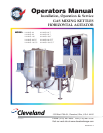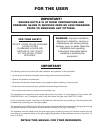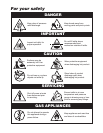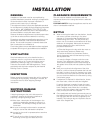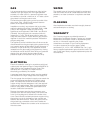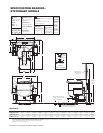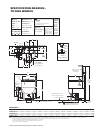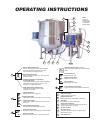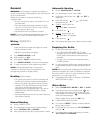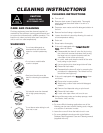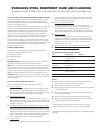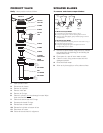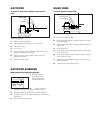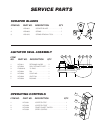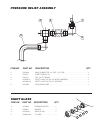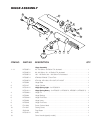
GENERAL
Installation of the kettle must be accomplished by
qualified installation personnel working to all applicable
local and national codes. Improper installation of
product could cause injury or damage.
This equipment is built to comply with applicable standards
for manufacturers. Included among those approval agencies
are: UL, A.G.A., NSF, ASME/N.Bd., CSA, CGA, ETL, and
others. Many local codes exist, and it is the responsibility of
the owner/installer to comply with these codes.
Observe all clearance requirements to provide proper make-
up air flow as well as sufficient clearance for servicing.
Dimensions and clearance specifications are shown on the
specification sheet and in the Clearance Requirements
section. Do not install kick plates or otherwise obstruct the
flow of combustion and ventilation air.
Check rating plate to ensure that kettle has been equipped
to operate with the type of gas available at the installation.
VENTILATION
Gas fired kettles are only to be installed under a
ventilation hood in a room which has provisions for
adequate make up air. Further information can be
obtained by referring to the U.S.A. National Fire
Protection Associations NFPA96 regulations. These
standards have also been adopted by the National
Building Code in Canada.
INSPECTION
Before unpacking visually inspect the unit for evidence
of damage during shipping. If damage is noticed, do
not unpack the unit, follow shipping damage
instructions.
SHIPPING DAMAGE
INSTRUCTIONS
If shipping damage to the unit is discovered or
suspected, observe the following guidelines in
preparing a shipping damage claim.
1. Write down a description of the damage or the
reason for suspecting damage as soon as it is
discovered. This will help in filling out the claim
forms later.
2. As soon as damage is discovered or suspected,
notify the carrier that delivered the shipment.
3. Arrange for the carrier's representative to examine
the damage.
4. Fill out all carrier claims forms and have the
examining carrier sign and date each form.
CLEARANCE REQUIREMENTS
This unit must be installed in accordance with the
clearances shown on the rating label which is adhered
to the unit.
FOR YOUR SAFETY. Keep the appliance area free and
clear of combustible materials.
KETTLE
1. When removing the kettle from the platform, handle
with care to prevent scratching or any other
damage. It is imperative that the kettle be level
before bolting to the floor. This will prevent any
twist or out of roundness to the kettle and will stop
deflection of the agitator. Make sure the kettle is
securely bolted to the floor and follow the
procedure listed below:
⇒ Raise the flange on the leg under the motor so
that it sets freely (stationary kettles only).
⇒ Position the kettle in its permanent location,
check clearances and level the kettle by turning
the adjustable feet.
⇒ Lower the flange or flanges under the motor
channel. Over adjustment, whether up or down,
could cause misalignment and cause damage to
the agitator drive shaft and hub (stationary kettles
only).
2. Next you must check the alignment of the drive
shaft for a uniform clearance between the hub and
the shaft. In order to check for clearance you must
remove the seal cover plate and pull the seal back.
you can check the distance for clearance by using
a wire feeler gauge.
3. If adjustment is required for side direction, loosen
the motor bolts, center the shaft and retighten.
If vertical alignment is needed, loosen the motor
bolts and add a shim to raise or remove a shim to
lower. Retighten bolts. When this is complete,
check to see if the agitator shaft coupling slides
freely for easy removal of the agitator.
4. Once positioned and leveled, permanently secure
the kettle’s flanged feet to the floor using 1/2 x 2 I/2
inch lag bolts and floor anchors (supplied by the
installer). Two bolts per leg are required to secure
each of the flanged feet.
INSTALLATION



